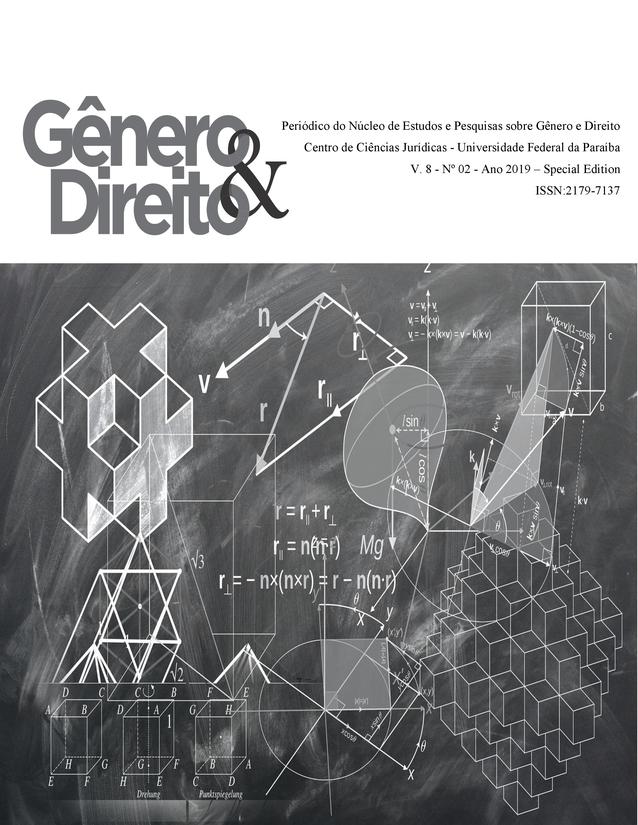EXPLORING THE WAYS OF RAISING MATERIAL IN MATHNAVI MANAVI
DOI:
https://doi.org/10.22478/ufpb.2179-7137.2019v8n2.46462Palavras-chave:
Material nurture, Rumi, MathnaviResumo
To express the contents and purposes, it is not enough to have an idea, but in order to cultivate meanings and subjects; one should look for the way of expressing that opinion and idea. There are ways and means to nurture the contents and purposes that the author chooses one or more of these ways to foster the meanings in accordance with his own requirements. Rumi has used these ways in Mathnavi to nurture the meaning, design, explanation and persuasion of the audience. The present study has examined this issue in Mathnavi in a descriptive-analytical way and seeks to answer this question: What is Rumi's method in Mathnavi and how he uses it? The results of the research indicate that Rumi has used various methods in Masnavi to develop his ideas including: definition, description, reasoning, study of causes and results, affidavits, comparison, division, conversation, debates and storytellingDownloads
Referências
Asad-ol-lahi. Khodabakhsh,(2011) "Diversity and Mobility and Their Factors in the Controversy of Saadi with the Claimant in Golestan", pp. 1 -20 Bahar Adab, No. 11.
Asadollahi, Khodabakhsh, Ali Mohammadi, Zainab (2012), Golestan, the Origin of Diversity and Mobility, Ardabil: Yavariyan.
Poornamardian, Taghi (2009), In the Shadows of the Sun: Persian Poetry and Constructing in the Rumi Poetry, Tehran: Speech.
Taghavi, Mohammad, (2009), The Little and the Basis of Comparison in Masnavi",Kavosh nameh Scientific and Research Journal of Persian Language and Literature, " Yazd University, No. 19, Pages24- 207.
Rastgho, Mohammad, (1993), The Manifestation of the Quran and Hadith in Persian Poetry, Tehran:Samt.
Rikor, Paul, (2007) A Metaphor for New Meaning in the Novel-Translation by Hossein Faghri, Maerefat journal, No. 120, Zarinkoub, Abdolhossein, 1985 ,Tehran Scientific .
__________ (2007) sea in the Jar, Tehran: Scientific.
____________(2005). Broken Ladder, Descriptive and Analytical Explanation of the First and Second Mathnavi's chapters, v.2, Tehran,Sokhan.
Zamani,Karim, (2007), A Comprehensive Explanation of Mathnawi's Spirituality, 1 & 2v, Tehran: Information.
Sajjadi, Jafar, (1996), Philosophical and Theological Sciences, Tehran: Amirkabir.
Samii Gilani, Ahmad, (2004), Writing and Editing, Tehran: Samt.
Shamisa, Sirous (2008), Literary Types, Tehran: Drop.
Shafii kadani, Mohammad Reza (2010), Poetry Language in Prose of Sofia, Tehran: Sokhan.
Fotouhi, Mahmoud, (2010), Rhetoric of Image, Tehran: Sokhan.
Fazilat, Mahmoud, (2006), Semantics and Meanings in Language and Literature, Kermanshah: Razi University.
Likaf, George (2015), The Metaphors That We Live with, Translated by Hajar Aqa Ebrahimi, Tehran:Elm.
Rumi, Jalaluddin Muhammad, (1389), the Spiritual Masnavi, Correction of Reynold Nicholson, Tehran: Third.
Mirasadeqi, Jamal (2001), Elements of Story, Tehran: The Speech.
Mirsadiqi, Seyyed Razi) ,, 2010., "The Role of Allegory in Rumi's Mathnavi Exposition .the Erfan Magazine, Islamic sciences (Religions and mysticism), Periods 7, n26, Islamic Azad University, Zanjan Branch, Pages 83-102.
Nazhat.Bahman.2009. "Light symbol in the literature of Sufiya".mystic studies journal of Kashan, Number 9, Kashan University, pp 155-184.
Homai, Jalaluddin (2005), what does Rumi say? Tehran: Homa.

